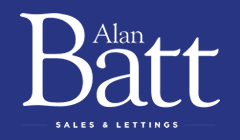Despite the doom and gloom predictions (a.k.a. guesses) from the City of London’s economists, housing prices in the UK did pretty well in 2018, though there were regional differences. House prices in London and the South East have hardly risen or even fallen in some places, whilst in the Midlands, North and other parts of the country they have generally increased. Wigan’s property values ended up 2.7% higher at the end of 2018, compared with 2017. Overall though, it’s an astonishing sign of strength considering the uncertainty and threats over the potential impact of Brexit in 2019.
Nevertheless, the statistics from the Land Registry come after a lethargic year for the number of properties in Wigan sold. Looking in finer detail, it isn’t a surprise that 2,539 property sales in Wigan over the last 12 months is somewhat lower than the long-term average over the last 20 years of 3,130 property sales per year in Wigan as the long-term trend of people moving less has meant a decline in the number of property transactions.

I believe locally, Wigan’s property value growth will be more reserved in 2019 after two decades of weaker wage rises. One of main drivers of property value growth is the growth of wage packets and therefore the price people are prepared to pay for a home. Interestingly, wage inflation has risen from 2.4% in the late summer to its current level of 3.3% and one of the reasons why wages are growing in the short term is the unemployment rate in the country currently only stands at 4.1%, continuing to stay close to its lowest level since the 1970’s.
However, even though Wigan salaries are on the rise, if you look at long term trends, Wigan’s property values are 150% higher than they were in January 2002, yet average salaries are only 76% higher over the same time frame. This means over the last few years, with average property values so high comparative to salary/wages, many Wigan potential buyers have been priced out of being able to purchase their first home.
At first glance, these stats are actually rather positive during this reported time of political uncertainty and the height of Brexit commotion, and whilst I am not entering into the pros and cons of Brexit itself, the numbers do stack up quite well since the Brexit vote took place nearly 3 years ago.
Moving forward, when taken with the recent reduction in short to medium term number of property transactions (i.e. the number of Wigan properties sold), it should be noted that a lot of the this buoyant house price increase has a lot more to do with a shortage of properties on the market rather than an uplift in the Wigan housing market generally.
Looking forward, I would say to the homeowners and buy to let landlords of the locality that I expect Wigan house price growth to remain stable between 0.6% and 1.8% by the end of this year (although they could dip slightly during the summer) ... as long as nothing unexpected happens economically or politically.
